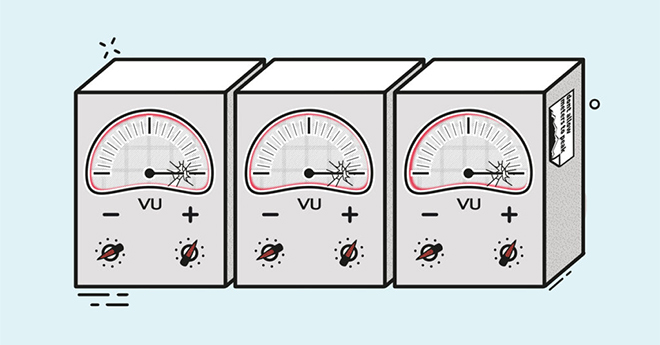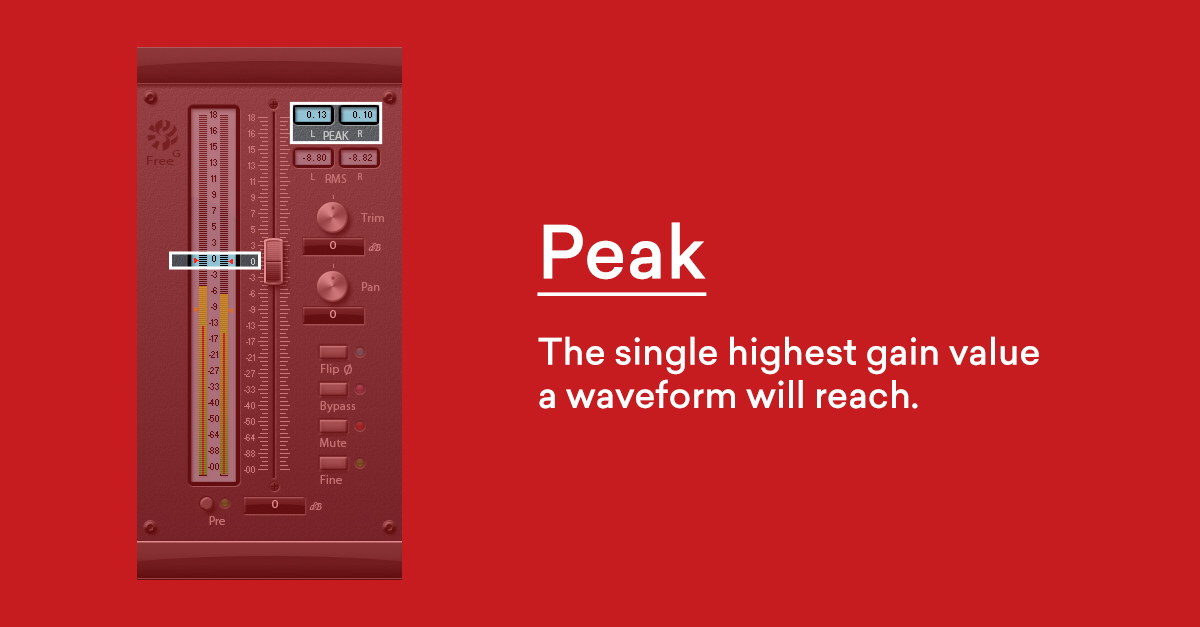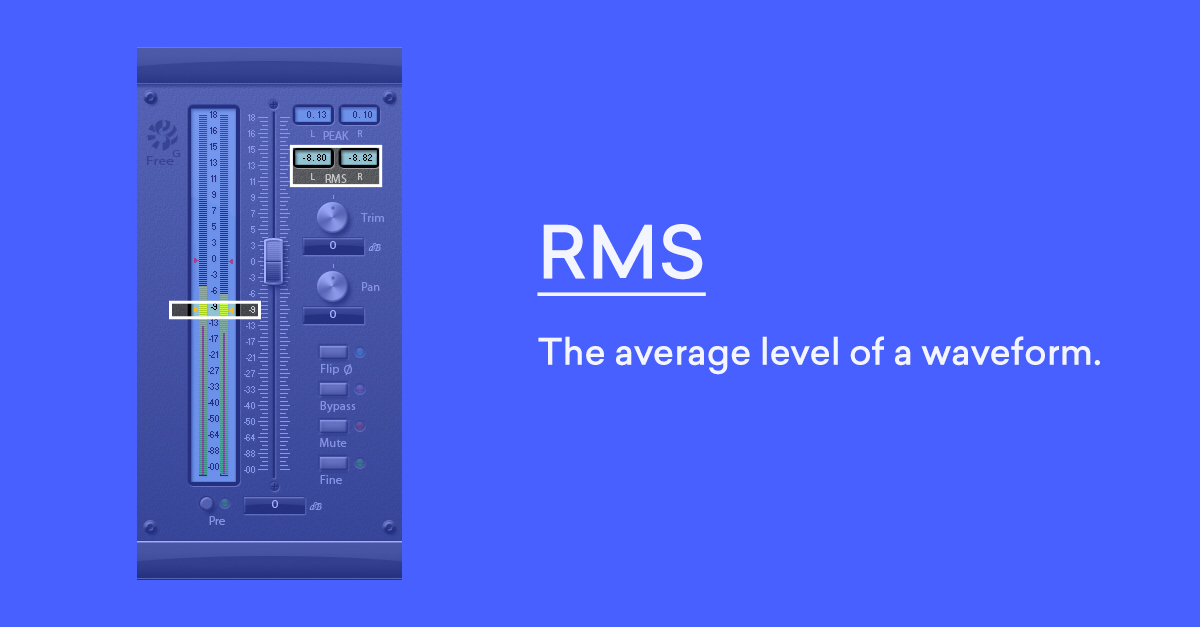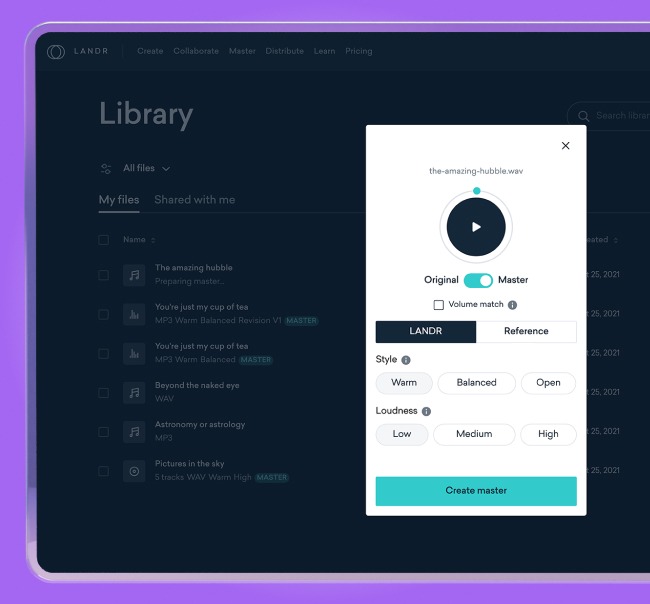
Headroom in Audio: How to Get Levels for Mixing and Mastering

Headroom is an important quality of audio signals in music production.
It comes into play whenever you record tracks, add plugins or export files with your DAW.
But what does headroom mean? And why does it matter? With such a fundamental subject it can be hard to know where to start.
Luckily headroom is easy to understand once you know the role it plays in your work.
In this article I’ll explain everything you need to know to keep good headroom everywhere it matters.
Let’s get started.
What is headroom?
Headroom is how much room your audio signal has before it starts to get compressed and distorted.
Every recording medium has a limit for how loud the signal can be. When you go over that limit, the tops of your signal’s waveform will get abruptly cut off.
Any audio information that passes above the limit is thrown away, causing harsh distortion and unpleasant artifacts.
This effect is called clipping, and it’s the worst consequence of bad headroom. In your DAW, the clipping point is 0 dBFS (or decibels from full scale) on your channel meters.
The amount of space in between the signal and the clipping point is the headroom. It’s also measured in dBFS.
The amount of space in between the signal and the clipping point is the headroom.
Good headroom means leaving a healthy amount of space so that the majority of your audio is far below the clipping point.
Why is headroom important?
Keeping good headroom is essential for getting the most out of your mix.
When you’re busy making music it’s easy to keep adding tracks to a session.
But all those combining signals build up at your master bus. Eventually, your mix could come close to the limit.
Even if you don’t get all the way to clipping, you’ll start to notice the effects of poor headroom if you listen closely.
You might find that all you need to do to increase clarity, separation and width is to pull down your faders or keep your tracking levels in check.
In fact, the best approach is to maintain good gain staging at every point in your workflow.
This way you can keep headroom everywhere for a healthy level at the master bus without needing to drag your faders down too far.
How do you create headroom in a mix?
Creating headroom is a bit of a misconception—all you have to do to get healthy levels in your mix is leave enough space for dynamic sounds to breathe.
All you have to do to get healthy levels in your mix is leave enough space for dynamic sounds to breathe.
The key to getting it right is to use your level meters. Audio metering isn’t as simple as it sounds, but it’s not hard once you understand how it works.
There are two important measurement styles to know when it comes to loudness—peak and RMS.
Peak level measures the intensity of the loudest single moment in an audio signal, while RMS takes an average of the intensity over time.
Dedicated audio meter plugins or the channel meters in your DAW mixer generally display both figures.
Peak levels are shown with an indicator light that persists at the highest dB value a signal reaches over time.

RMS levels move and breathe with a solid bar of lights indicating the average signal level.

Watching both is the key to good headroom. You should aim to have the peak levels of your sound hitting around -9 or -10 dBFS at the loudest with the average hovering around -18 dBFS.
Keep to that guideline while tracking, mixing with plugins and exporting files and you’ll never have headroom issues again!
How much headroom do you need for mastering?
Leaving good headroom is essential as you prepare your mix for mastering.
Mastering is a delicate task that gradually raises the level of the song with dynamic range compression.
If you haven’t left enough headroom in your exported track, there won’t be enough space for the mastering process to work.
It’s one reason why adding master bus plugins like aggressive limiters is not advised. Leave this sensitive task for mastering.
To summarize, here are the guidelines for good headroom across your mix:
- Aim to have the peaks of your signal reaching around -9 or -10 dBFS with the body of sound hovering around -18 dBFS
- Follow that rule of thumb while recording sounds with your audio interface, processing your tracks with plugins and routing channels to busses
- Above all, make sure to leave ample headroom at the master bus when exporting your track following the same guidelines.
Max headroom
Headroom is a key technical issue in audio production, but it’s not too hard to understand.
When it comes to getting the most from your mix and master, all you have to do is follow this guide for the best results.
Now that you know how headroom works, get back to your DAW and keep making music.
Gear guides, tips, tutorials, inspiration and more—delivered weekly.
Keep up with the LANDR Blog.




